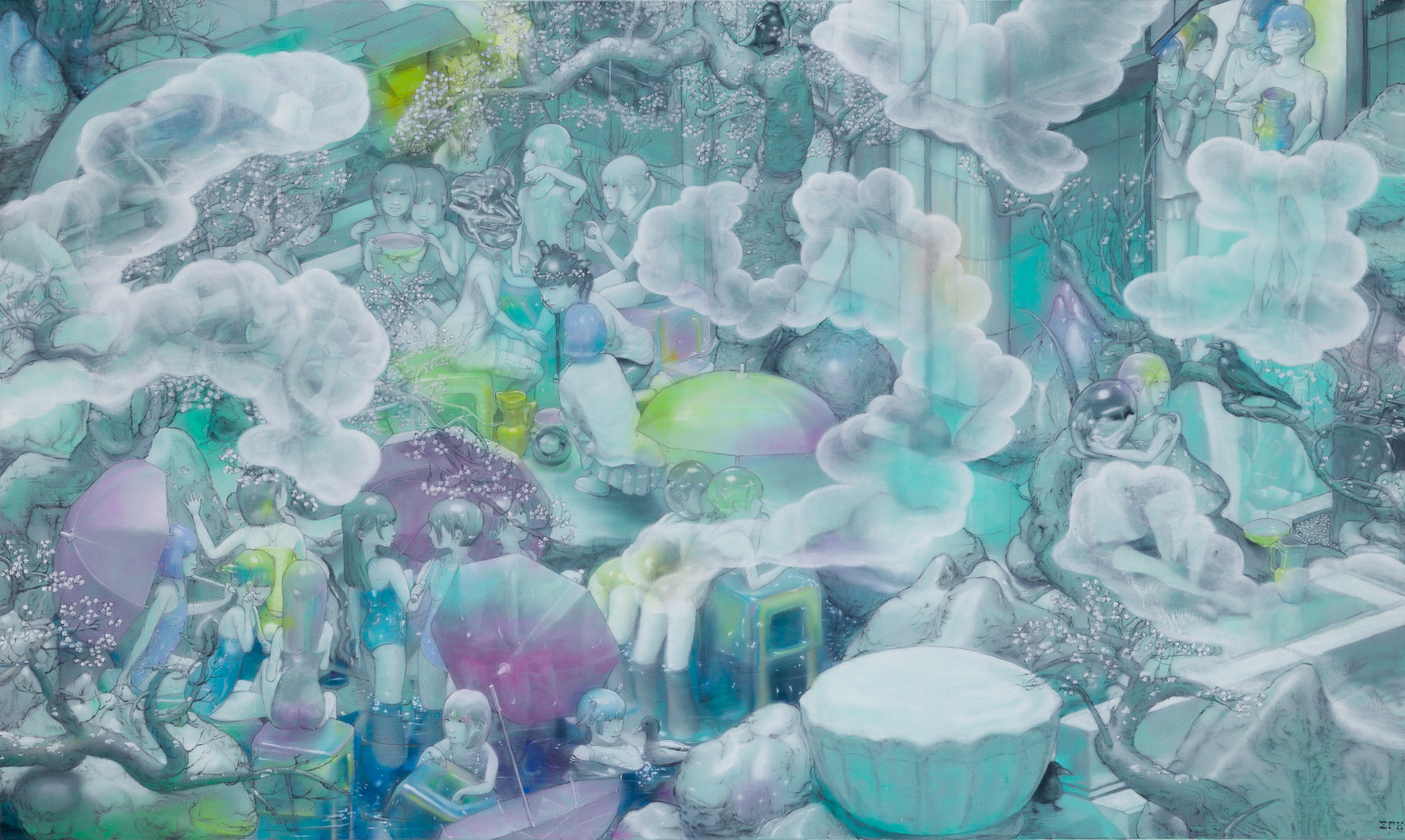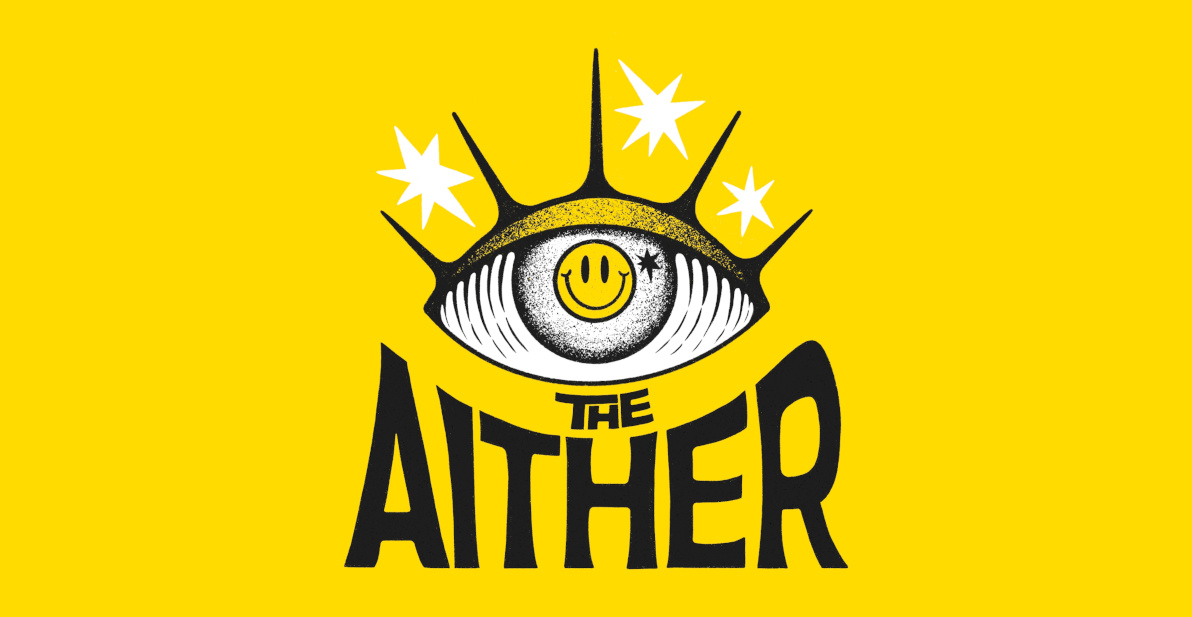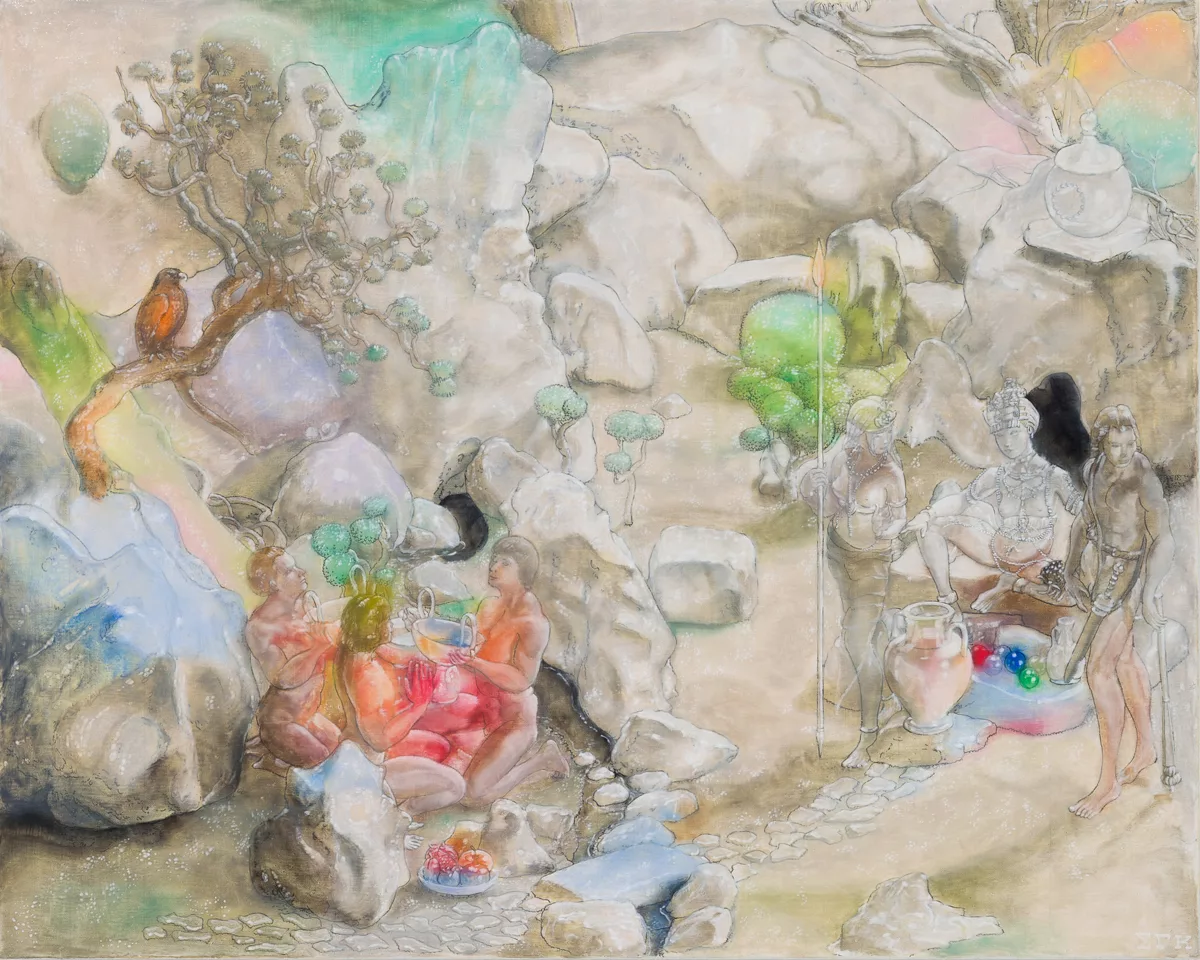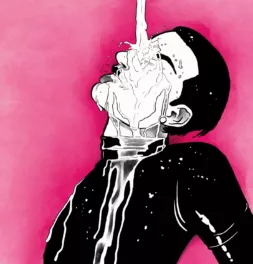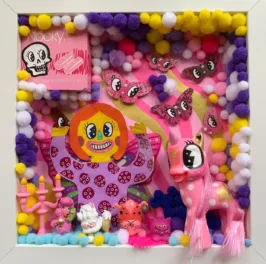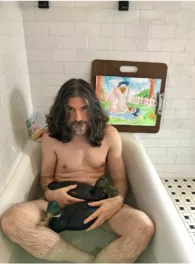Samuel Quinteros is an Australian artist creating beautifully executed, ethereal and erotic works imbued with a deep knowledge of history, philosophy, religion and myth.
Growing up Samuel was surrounded by creativity on all sides – a grandfather who pursued painting and violin, a grandmother well versed in the piano, along with parents who encouraged their son’s many varied interests. These experiences also imposing upon Samuel the importance of a daily ritual when practising one’s craft; and a lifelong passion for art and classical music
Currently represented by the highly regarded ‘Galerie pompom’ in Sydney, Australia; Samuel has presented works to much acclaim in Singapore and Japan. Indeed Asia, along with it’s myths, history, religion and culture are key influences on Samuel’s art, and personal philosophy.
With Samuel positing a trip to Japan as a teen as a pivotal early influence. Stating how he,
“Went overseas for the first time, visited my father in Tokyo, a vast megalopolis which shattered my parochialism.
This meeting with a whole parallel civilisation, rich with artistic traditions of which I had prior only vague intimations, was my gateway into Asia in intellectual terms.
Axioms that were totally different – a mono-cultural, mono-ethnic society, based on Confucian, Taoist and Buddhist ideals, came as a revelation of sorts for me – although it was a vista that I first ‘felt’ as an organic whole before I began to understand.
It was a wonderful experience, and I would continue to visit many more times over the years. “
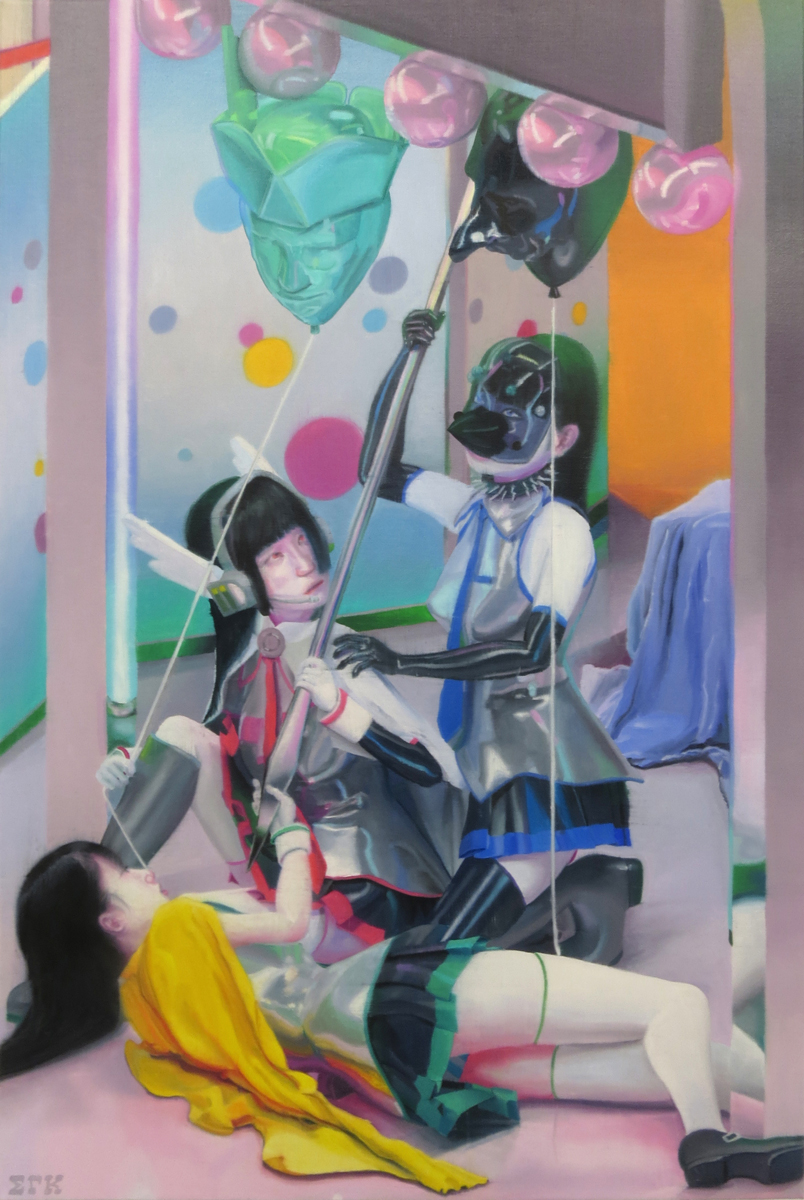
With Samuel currently back in Australia preparing new works to show at September’s Sydney Contemporary Art Fair – we thought now was the perfect time to ask him to share his thoughts on philosophy, music, travel, dreams, and a whole lot more.
Read it all in the interview below…
Getting Acquainted
Name and D.O.B?
Samuel Quinteros, born 1992.
City, State and Country you currently call home?
Sydney, NSW Australia.
City, State and Country you’re from?
The same.
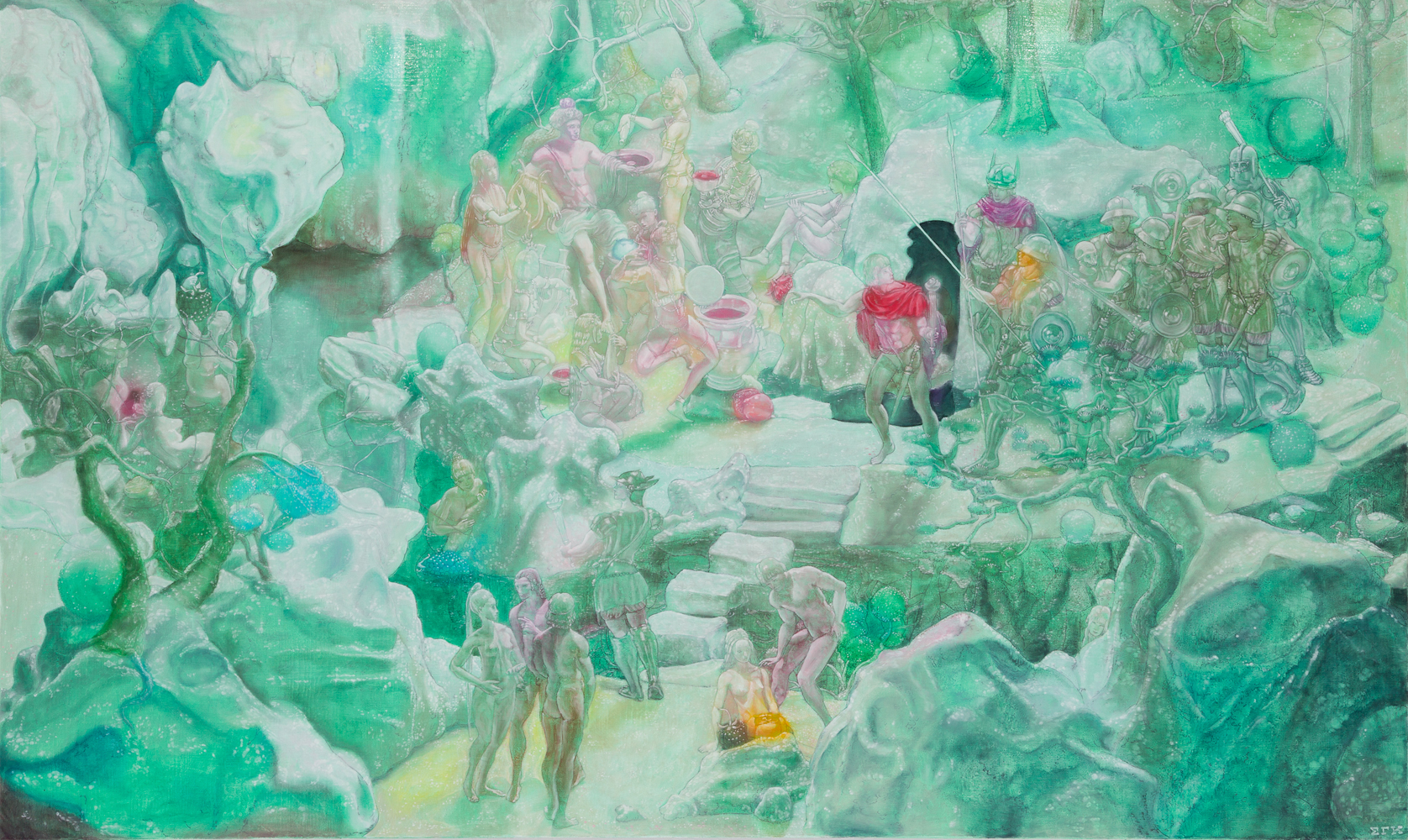
Please describe some memories from key stages of your life: concerts, art, toys, romance, hunting, school, politics, crime, religion… ANYTHING really!
* Age 5 – beginnings:
By this age I had already decided to be an artist, and the prospect of enduring 12 years of schooling was a painful one.
I happened to be living in an area with many Greeks, and the classes that most captured my interest was when the teachers would entertain us with stories from Greek myth, I still remember some vividly such as the abduction of Persephone by Hades.
I was fascinated by the sense of continuity, that stories so ancient were carried by a people and still transmitted from mind to young mind as a living tradition.
* Age 10 – continuations:
As a child I had a blissful family life, nested within a large and affectionate family. Myriad occasions enjoying tea around a well-attended kitchen table are the flowers of my memory.
Music is part of my family’s culture, everyone’s house had a piano – by means of which I received basic musical training. My grandmother for example would practice every day, and through listening I became acquainted with a lot of classical music – especially her favourites, Mozart, Bach, Chopin, and Brahms. My grandfather played the violin, and he also painted with oils.
Throughout my childhood I loved to draw, paint, write music, and invent fantasy worlds. I even made up my own language and script which I memorised, so I could ensure the secrecy of my diary.
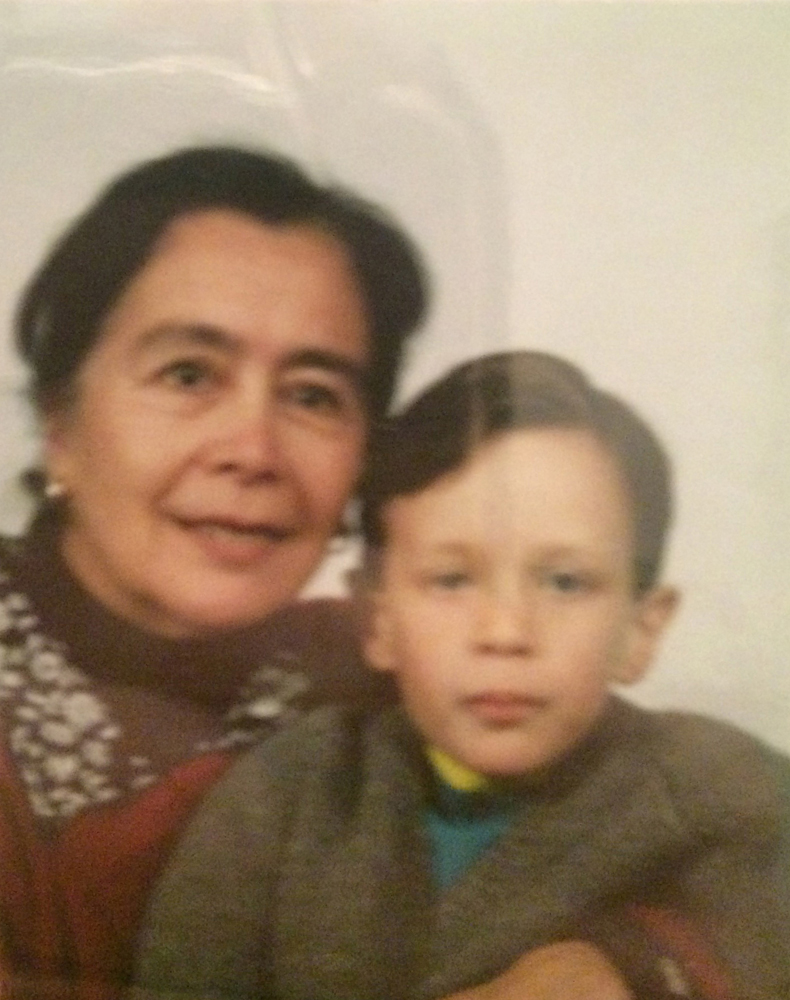
* Age 15 – getting serious:
Went overseas for the first time, visited my father in Tokyo, a vast megapolis which shattered my parochialism.
This meeting with a whole parallel civilisation, rich with artistic traditions of which I had prior only vague intimations, was my gateway into Asia in intellectual terms. Axioms that were totally different – a mono-cultural, mono-ethnic society, based on Confucian, Taoist and Buddhist ideals, came as a revelation of sorts for me – although it was a vista that I first ‘felt’ as an organic whole before I began to understand. It was a wonderful experience, and I would continue to visit many more times over the years.
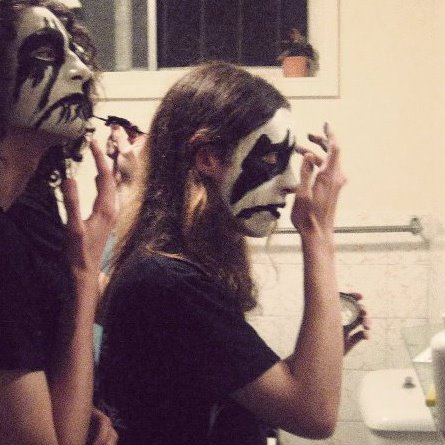
* Age 20 – young adult:
My university days are in full swing.
With single minded intent I was spending every possible hour, every day of the week, painting in my studio. The university campus happened to previously be a mental hospital, by coincidence the very place where my great-grandfather met his demise, a man who fought in WW1 and came back irremediably traumatised.
Ideally an art school should be a lively and rigorous place, but most students didn’t tend to stick around. These Edwardian era hospital wings, converted into studios, always seemed to be carrying a heavy silence. Nonetheless, I could enjoy a long period of uninterrupted work.
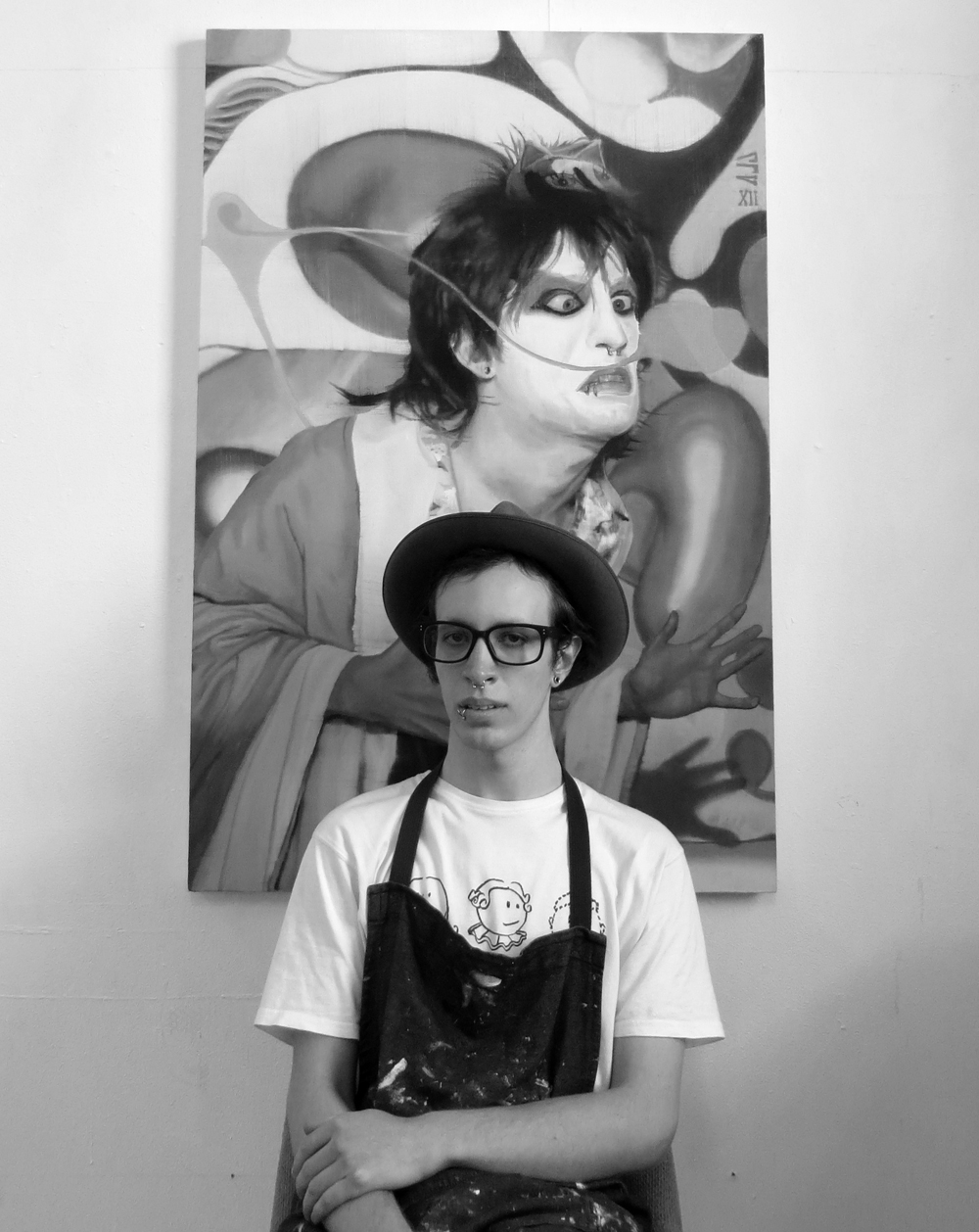
* Age 25 – adult mode:
In the years immediately following university I felt the need to break with my surroundings and the culture of my milieu, and a great yearning to get away from city life and rebalance myself in a more natural state of being, grounded in nature and the pursuit of knowledge.
The apex of this period of ‘retreat’ was when I spent time solitarily wandering the surroundings of Kyoto. I would begin each day with a simple action, to leave the house before dawn and worship the majesty of each sunrise as I moved through the landscape, breathing in the soft, silvery air of dawn. Such a basic action helped me find my true sense of self and happiness.
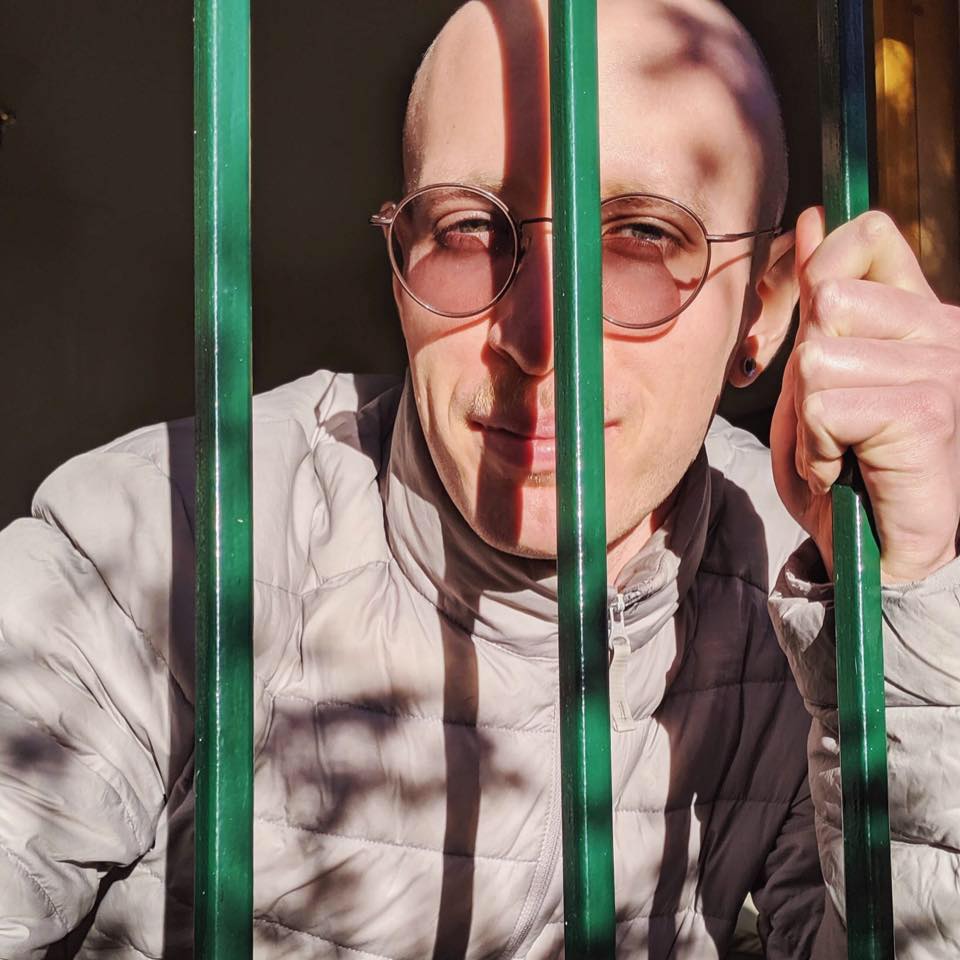
Personal motto?
Be strong.
Art Questions
When and why did you first start making art of any type!?
I loved drawing and painting as a child, it always felt like the natural expression for my purpose in life. After finishing school I knew that I wanted to pursue it full time, so I became an art student for 4 years. That period was the beginning of my vocational pursuit of painting.
My motivation was always that I wanted my role in society to be contiguous with my inner world that was always striving to realise beauty and meaning.
Any pivotal artistic moment(s) / influence(s)?
In my family’s house we always had many excellent art books. For example I enjoyed books of Bellini, Goya, Dali, and in particular the works of Hieronymus Bosch affected me greatly. Seeing a painting like the Garden of Earthly Delights, a self-contained cosmos in a painting – a western mandala of sorts – nourished my spirit with an everlasting love for art.
Early on I always saw the value in copying works of other artists in order to learn how they were made. That way you can attempt to reverse engineer the painting to discover its foundational principles. We can learn so much from the master painters of the past.
At art school the first exercise we were given was to paint copying a photo, which was novel to me. I became very good at copying, but I didn’t want to be limited by the photo as a source material, so I started making collages out of diverse imagery. Eventually that also left me feeling still too passive in regards to realising what I could imagine.
At some point I read that Venetian painters such as Tintoretto made dioramas with wax figures and candle light as models for their paintings. This gave me the inspiration to start using 3D computer graphics software to create digital ‘sets’ as studies for the modelling in my paintings.
So far I’ve only mentioned things from the realm of painting, but in actuality my approach to painting has also been greatly influenced by music, literature, spirituality and computer programs – too many things to individually list – in total, the way I live my life, because I believe my life should serve art totally.
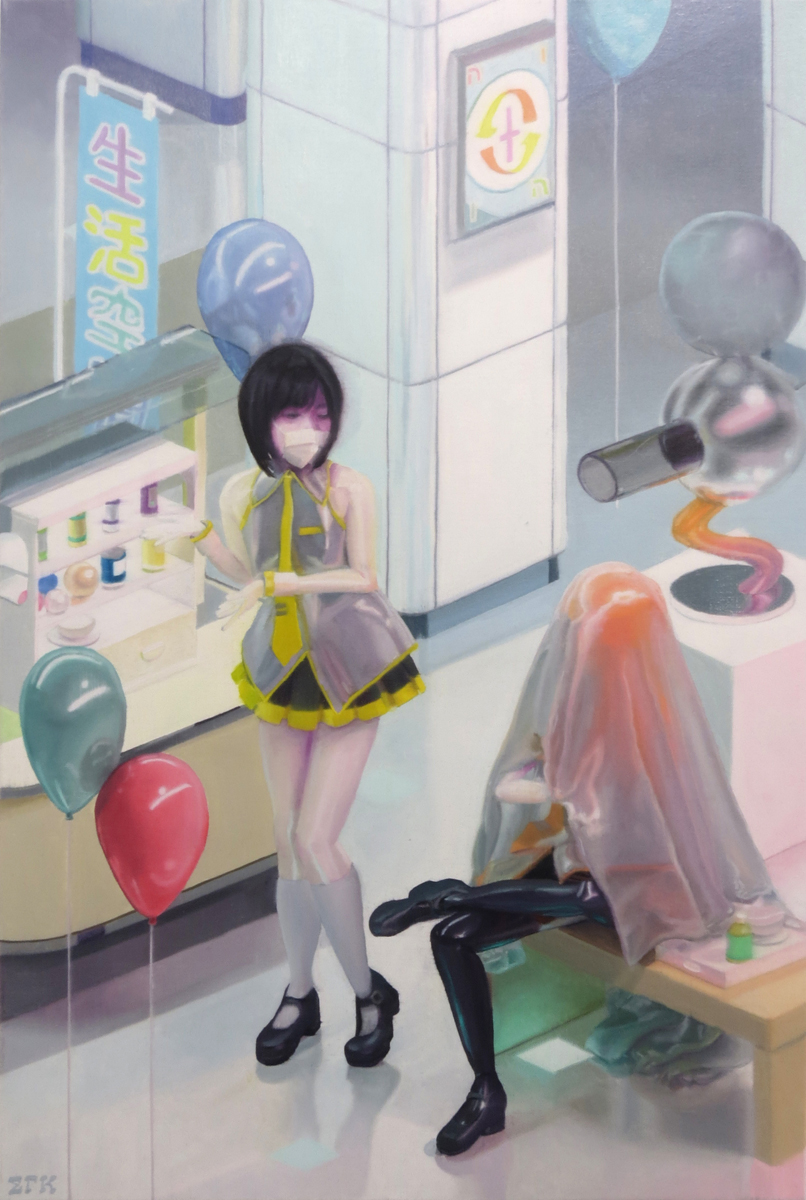
Describe the process of producing your art? – Dot point all o.k!
For me, making art is my way of expressing an ideal, one that gives an integral purpose to life. To be truly healthy requires having a purpose in one’s life – so when art is inseparable to the meaning of our life as a whole, it is the expression of the will to health.
Having an unbreakable determination towards some purpose attracts a lot of energy into your life.
I think that as human beings we ultimately we need a ‘god image’, in mythopoetic terms – or you could call it a consciousness of our higher teleology, which includes our entire biological nature within it. I’m always trying to visually capture a sense of ’lucid inebriation’ brought about by the presence of this deeper dimension in life.
The process of producing my art beings with finding a resonance within the world of visual perception with this ‘lucid inebriation’ that produces a fresh, ecstatic feeling. Then building up from there, with every visual principle I have studied in art – line, tone, colour, etc, I try to bring it to its extremity, as far as my creativity and technical abilities allow.
I choose to draw from the mythopoetic language of our intuitive faculties, rather than the entirely intellectual game of academic art. My artistic paradigm is Wagnerian – not Greenbergian.
* Your sketches?
With line-work I am inspired by the Chinese tradition of Song Dynasty landscape painters, I try to learn from them about the sense of rhythm in line-work.
Studying the formal language of an artist like Guo Xi was significant in my approach to drawing.
* Your paintings?
With colour, I’m inspired by the chromaticism of Barocci which is like the visual equivalent to what the late works of Wagner are in musical terms.
Roberto Matta is another inspiration because of his powerful sense of tonality, spaciousness and scintillating colours that remind me of the nightscape of Tokyo.
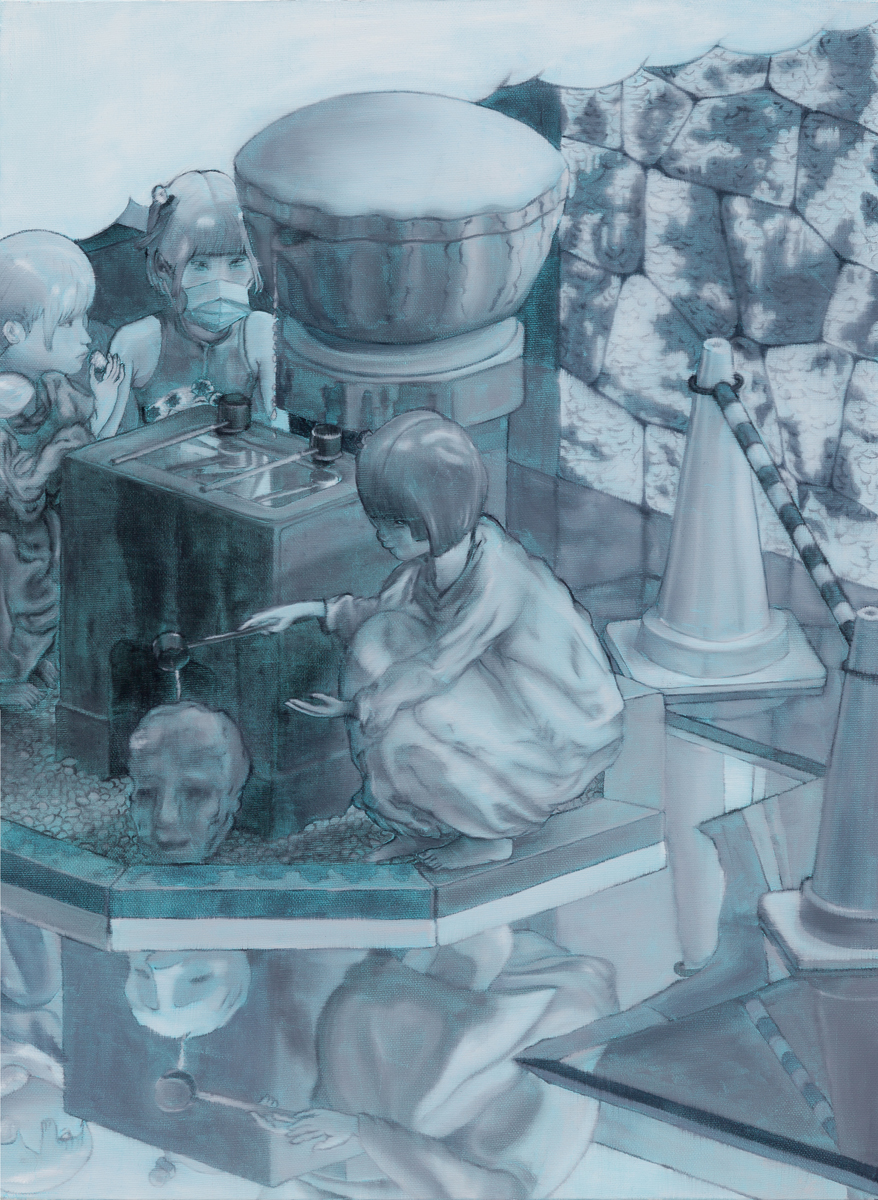
Worst aspect of the contemporary art hustle?
That in most contemporary art the emphasis is on the ‘contemporary’ rather than the ‘art’. I think this is at least partially due to the narrowness of the scope of education.
Best aspect of the contemporary art hustle?
The kindness of my early supporters, when they went against the grain to advocate for what was individually meaningful to them.
Favorite other artist(s)?
One of the best exhibitions I ever saw was Tomoko Kashiki at Ota Fine Arts in Singapore, 2014.
Her paintings had a refinement and a subtle intensity that I had not seen before in a contemporary oeuvre, it reaffirmed for me the potential for painting in contemporary terms.
Odds and Ends
What role did toys play in your childhood?
I used to collect Warhammer models just because I wanted to paint them, I never got around to playing the actual game.
Who was your 1st crush and why?
I can remember the first time I felt the stirrings of romantic sentiment, I would have been about 6 years old, came to me in a dream in which a whole parallel life was glimpsed in which I experienced the idea of an idealised female partner. It was like a new depth had been thrust upon my life out of nowhere.
Such experiences really take one outside of oneself… I think the capacity to love must dwell deep within our organism.
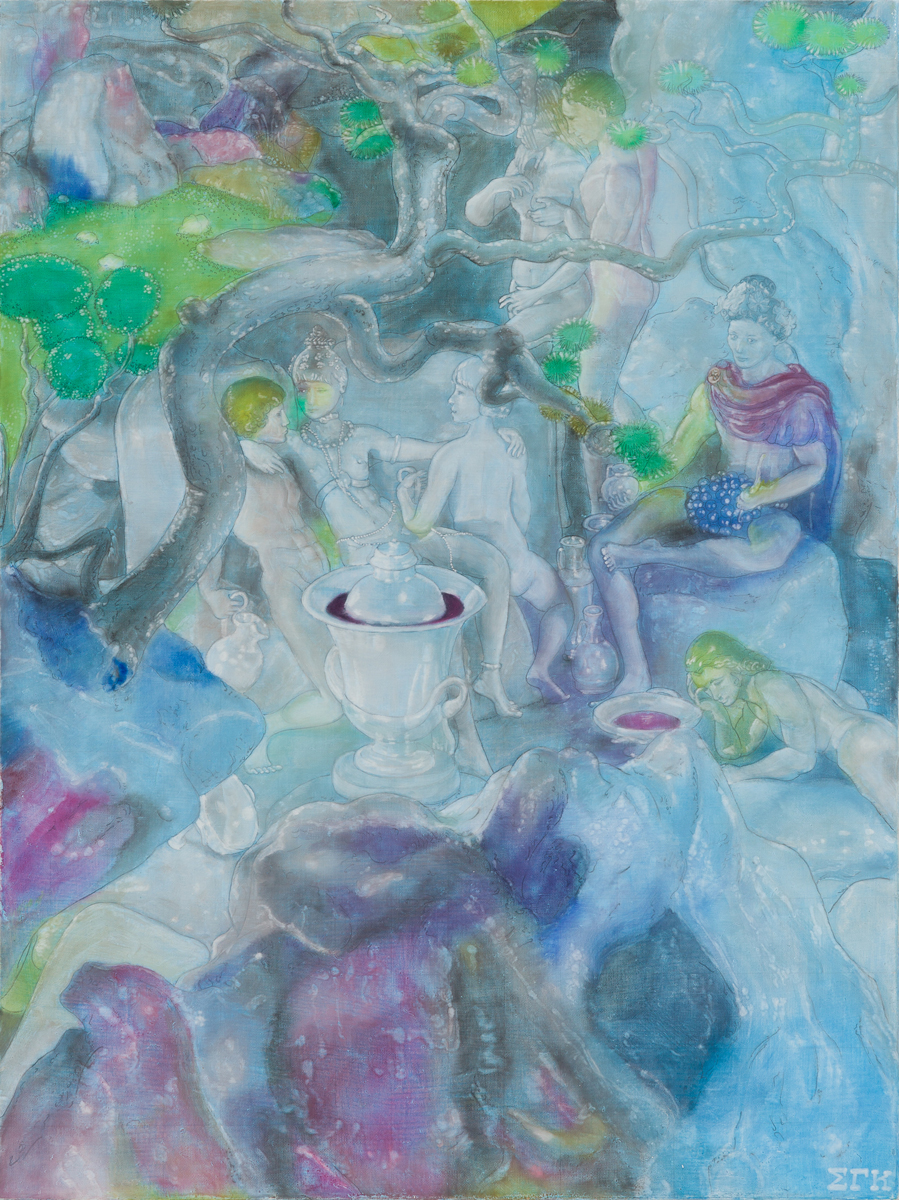
Does sex change everything?
According to the Tantric view, in the Kali Yuga (the last age in the cycle of decline, which is our age) the only two disciplines for spiritual expansion available to man relate to sex and to breathing. One can say of both these activities that have a liminal character, a foot planted in both the conscious and the unconscious.
One can breathe with awareness or without awareness (automatically).
In sex one can experience an acute dissolution of one’s lucidity, one gets swept away by the body’s energy like a kind of trance state. In lucid dreams, sex will almost inevitably generate an emotional intensity strong enough to rip apart the fabric of the dream and result in waking up.
There is much energy in sex because it is the instrument of life’s replenishment.
It can be said of breathing and sex that they are also our most primordial acts. We die individually if we don’t breathe air for a few minutes, and in a larger sense we die as a lineage if we fail to reproduce through sex.
For me, the heroic question – the one that opens up the potential to ‘change everything’ – is what level of consciousness do you bring to the action. To not merely go on existing in the automatic and passive way, but to yoke oneself in the act onto a superior principle.
Please describe what you think the Australian zeitgeist is today?
I’m going to answer this by describing my Australian life.
Currently I live, commute and work in the inner city of Sydney, Australia’s largest city. When I look at the form of it, it is a matrix of mostly mercantile interactions with no historical or communal rootedness; most people I interact with daily have their origins from all over the world, as do the products we consume.
Furthermore, the information I choose to pay attention to comes from the immaterial realm of books and the internet. So I don’t know if I can say anything meaningful of a distinctly Australian zeitgeist; the place I inhabit might just be an economic zone.
I went to contemporary art events in Tokyo, in Venice, and I encountered the same art mannerisms, the same viewpoints, as in Sydney.
Which cartoon character, would you most like to see in a tribute sex toy, and why?
[Please draw a prototype of your design!]
I spent three months working in Tokyo’s Akihabara district, so I can say that at this point I think I’ve seen more than enough cartoon based sex toys. Although probably the funniest one I ever saw was a ‘Keith Haring collaboration’, decorated with his cartoon figures.
Anyway, I actually did a sex toy based painting once, so I’ll share it here.
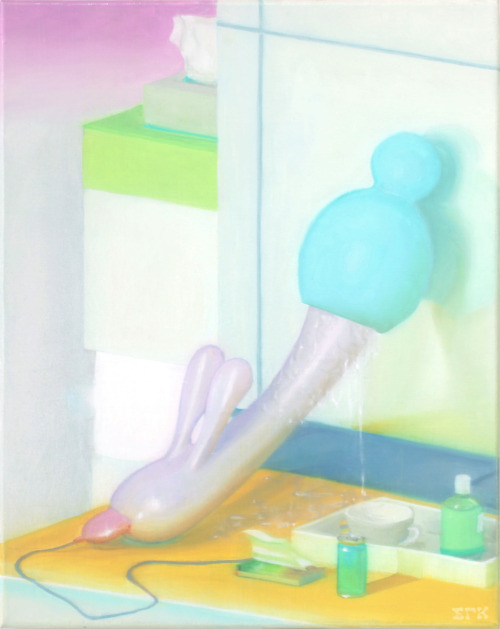
Who would win in a fight and why: Varg (from ‘Burzum’) Vs. Agro (The Australian puppet voiced by Jamie Dunn)?
[Please draw the battle in all its violent beauty!]
Let’s find out…
*cue ambient music made on a heavily reverbed ancient germanic lute*
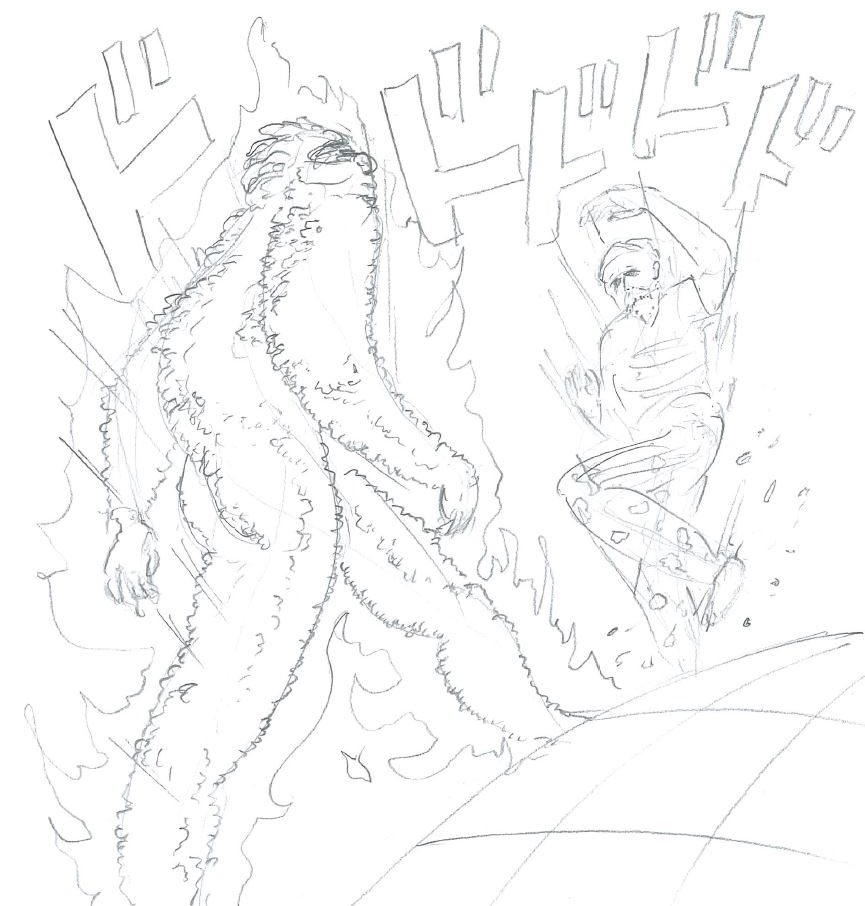
What are the top 3 items you own?
[Please include photos or drawings of them!]
1) A ceramic ‘Kuro-Oribe’ tea bowl (for matcha) with a ‘Cruz’ motif, made by Tanaka Motohiko.
The cross motif which makes it grail-like speaks to the absorption of imported western motifs in Japanese art during the Sengoku (“warring states”) period before Japan’s closing up of two and half centuries. Every morning I enjoy a cup of matcha with this cup as a benediction on the day.
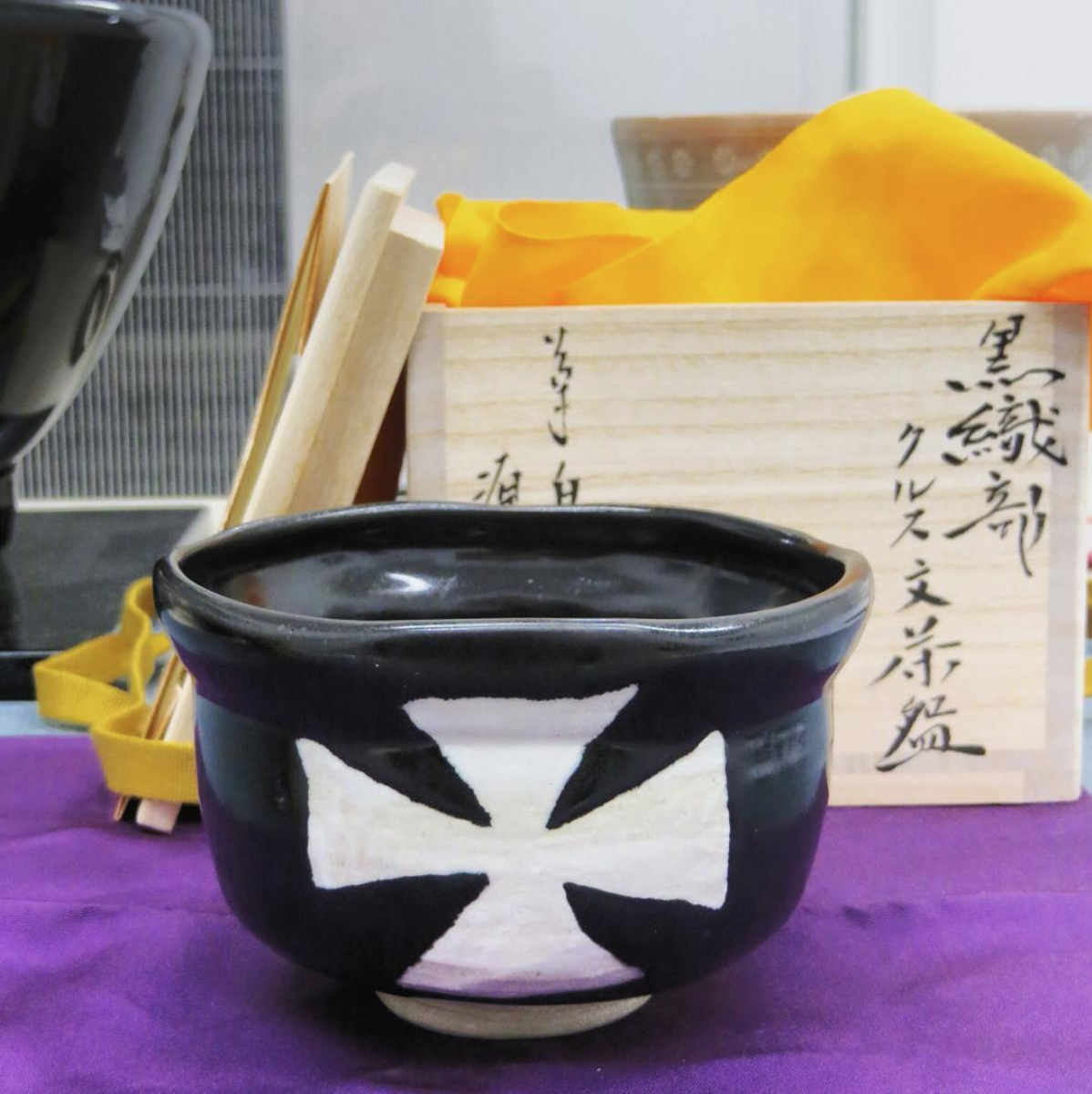
2) I love my art books. Probably my favourite is my Tomoko Kashiki book signed by the artist, because it contains many refreshingly beautiful paintings that I am constantly learning from, and it is also imbued with my memory of that encounter.
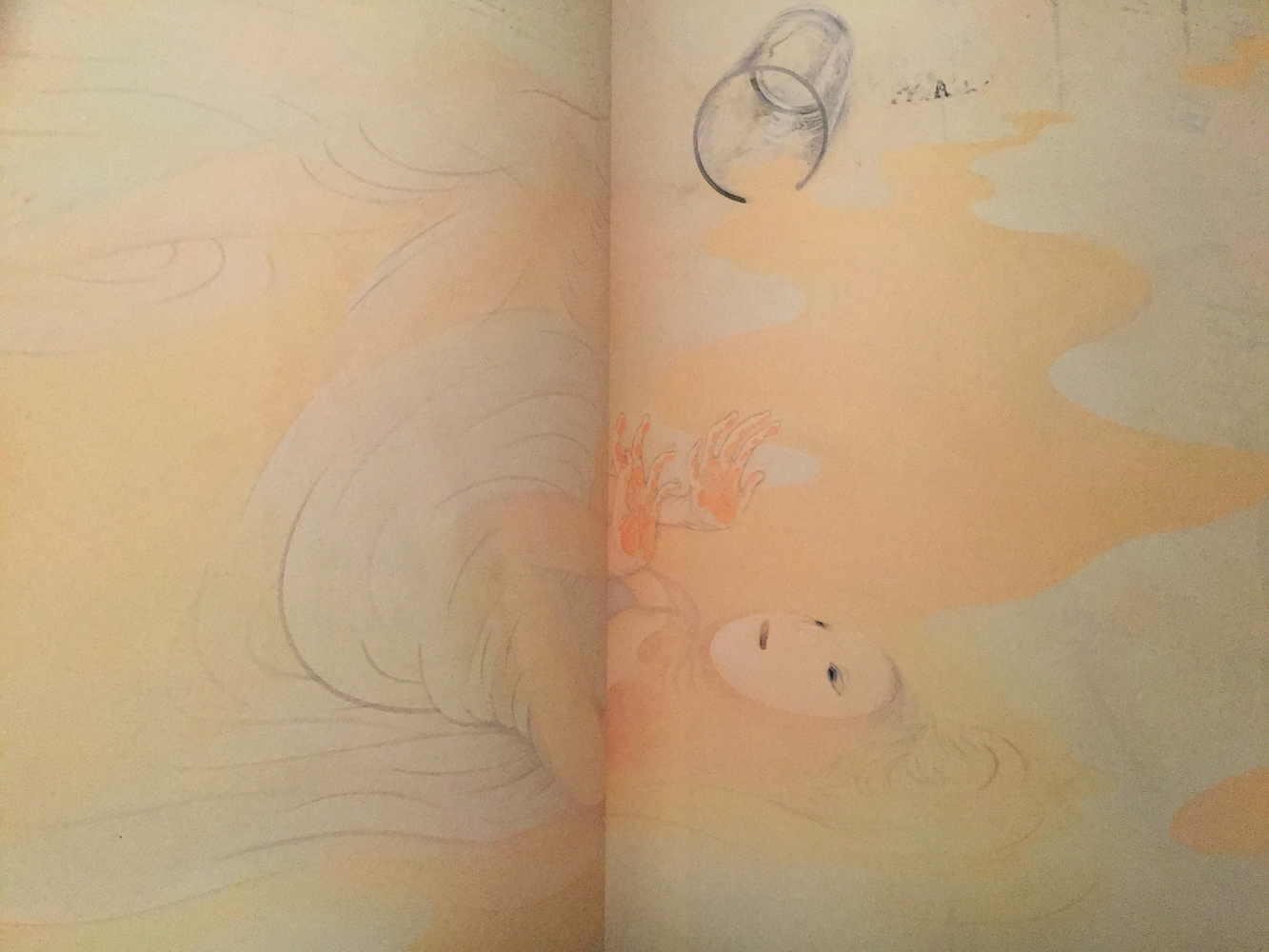
3) A ‘hagi-yaki’ ceramic cup made by my friend, with dripping translucent white glaze.
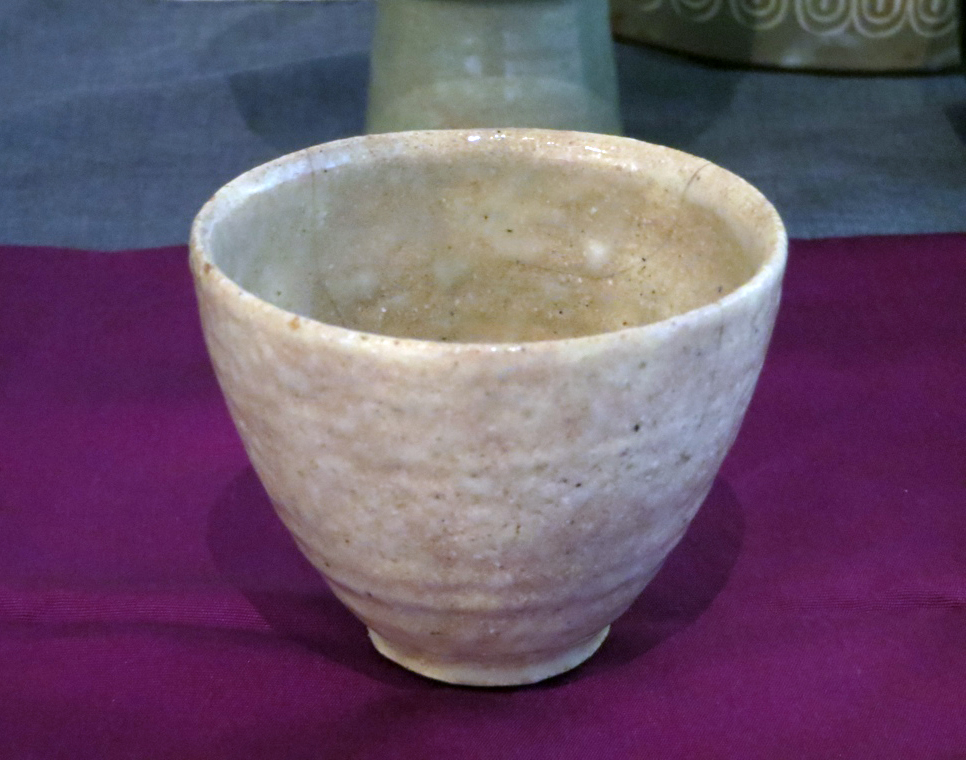
Drugs – waste of time or gateway to the universe?
Anything can be a waste of time.
I think psychedelic drugs can be a tool for some people to open a ‘gateway’ to an expanded consciousness, it all depends on the total conditions you create, of which the drugs can only but be a part.
I think the use of psychedelics is a legitimate facet of philosophical enquiry, and historically there are precedents for this, for example Plato and the Eleusinian Mysteries.
But personally, my only drug of choice is the humble tea leaf, it’s all I require for now. Dali said “I don’t do drugs, I am drugs”, and one knows what he means when you consider that this ‘gateway’ exists within all of us.
The mind is like a filter that captures just a shard of reality makes an abstraction of it, and a drug may pry that filter wider or add a dimension to its modelling for a time. But these perceptions are a spectrum and not a dichotomy, life itself already is a psychedelic experience. Just look up at the stars if you’re lucky enough to be somewhere with a clear sky and you’ll see it. Or you can meditate and you’ll find your own train of thoughts were always a kind of relentless hallucination.
One can chase intense, peak experiences, but I think this is only valuable when something can be brought back that truly mutates us, and even better if we can transform ourselves on the plane of our everyday habits and what is called ‘character’. And that cannot be achieved without some form of discipline, which is the real gateway to the realm of freedom.
Please describe your latest dream in detail…
Here’s my latest lucid dream:
At the point where my dream is interrupted by sudden lucidity and upon gaining a sense of control over this world, I soon become overcome with lust towards another dream figure. However, a part of me nags in the back of my mind, “isn’t there something more worthwhile you could be doing?”. My state of frenzy quickly wanes after thinking this, and I then feel ashamed to have almost lost control to desire.
Suddenly a suggestion enters my mind from out of nowhere to chant a certain sanskrit mantra, as a tool to maintain focus within the dream. It is extremely effective, and I feel pervaded by a calm and deeper awareness. As a result, the dream turns out to be very lengthy, and I will only recall pivotal moments.
I attempt to ‘reset’ my environment from the dreary suburb I am in and evoke some beautiful landscape. The stability of the dream seems to collapse, and I enter the intermediary grey void between dreams. I perceive myself waking up in my bed, but the fact that I have been continuously chanting the mantra yokes me to a certain critical detachment. Usually I might have succumbed to this ‘false awakening’ and lost my lucidity, but this time I move smoothly into another dream scene.
I am moving through a house and remembering that I wanted to see some dream art, I direct a wish towards the awareness behind the dream, that in the next room, “I should see some artwork that I need to see”. As I step into the room, I am surprised by a lack of art, but rather the room is quite austere, with some walls conspicuously painted a vivid blue colour. On the opposite end of the room, two dream figures sit facing me at a desk, and I feel like I’ve entered a courtroom of sorts. These dream figures have the air of being auditors of some kind, and in the way they look at me they seem highly conscious (as if they are aware that I am aware that I’m dreaming). I had some kind of exchange with them, I can’t remember what I said, but their answer to me was to somehow cause my deceased grandfather to materialise standing next to me. As I turned to face him, I noticed that I had a lack of fear, ghostly as his presence was, and I gave credit to my continuous mantra chanting for my unusual calmness in the face of such an eerie situation. No words were exchanged between my grandfather and I, and he stared at me mutely and unemotionally.
I felt quite humbled that the dream had answered me in such an unexpected way, and also felt a sense of connection with to my family because of his presence.
Later towards the end of the dream, I decide to enjoy something impossible, so I begin to fly up into the sky. I took great pleasure in observing the landscape as it got smaller beneath me, and marvelled at the power of the dream to generate such a panorama of details. I began to focus on a forest that appeared beneath me, because it reminded me of Kyoto’s Shimogamo shrine, and I wished to land there for a visit. I woke up before I could reach there.
Upon awakening I felt euphoric, which lasted the rest of the day. At first, I figured that the mantra I had been chanting in the dream was likely an invention of my dream, but when I googled the words I was amazed to see that it was precisely a real, well-known mantra.
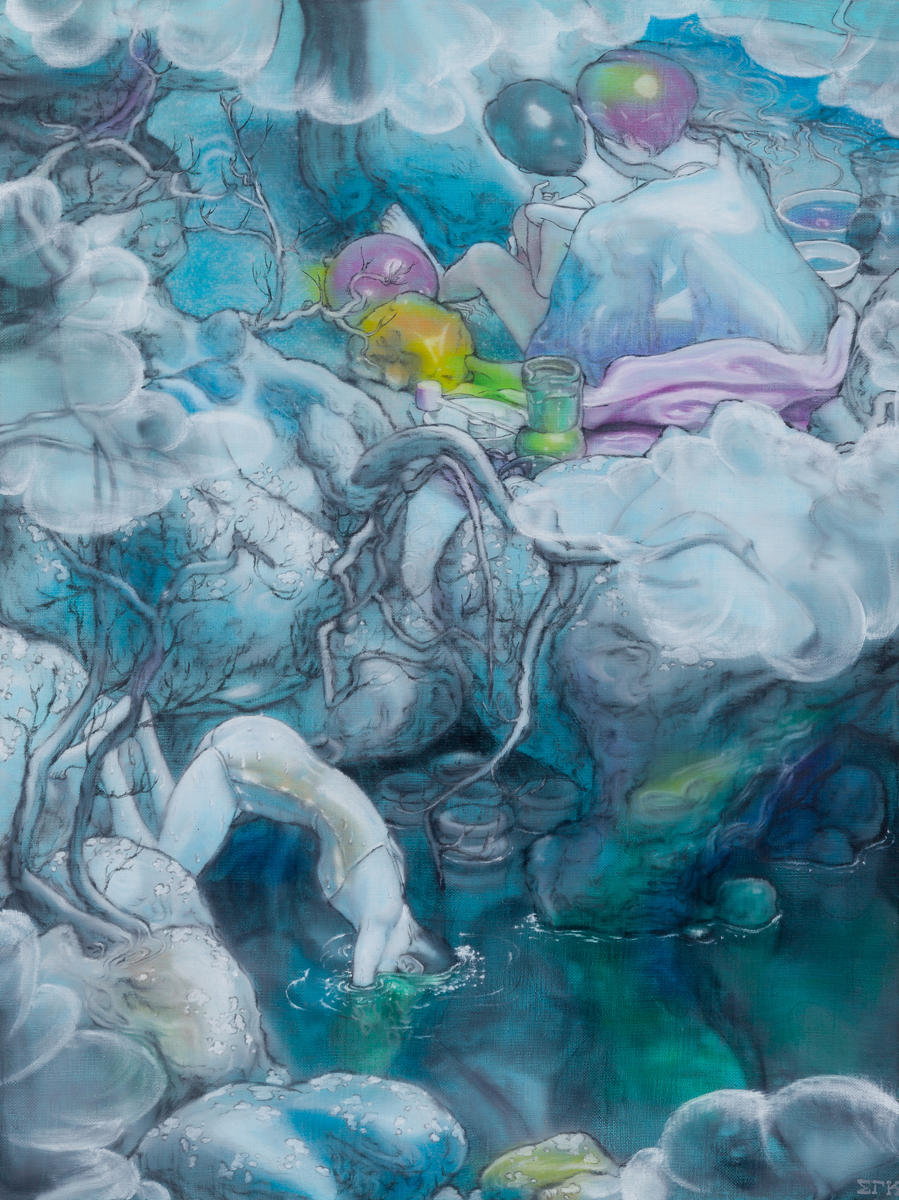
Of everything you have done what would you most like to be remembered for and why?
To be honest I haven’t done the work yet that I would like to be remembered by.
But I would like to be remembered by certain people who mean a lot to me, for the bonds of friendship between us.
If people wanted to work with you or buy something – how should they get in touch?
For buying enquiries, please contact Galerie pompom.
Otherwise you can contact me by email at samuel.g.quinteros (at) gmail (dot) com.
The Future
Any collaborations on the horizon?
Keep an eye out for future collaboration with Shanghai-based Kynan Puru Watt (Wifi Over My Body).
Any major projects you want to hype?
I’ll be showing new and old paintings at Sydney Contemporary Art Fair which runs from 12-15 September at Carriageworks.
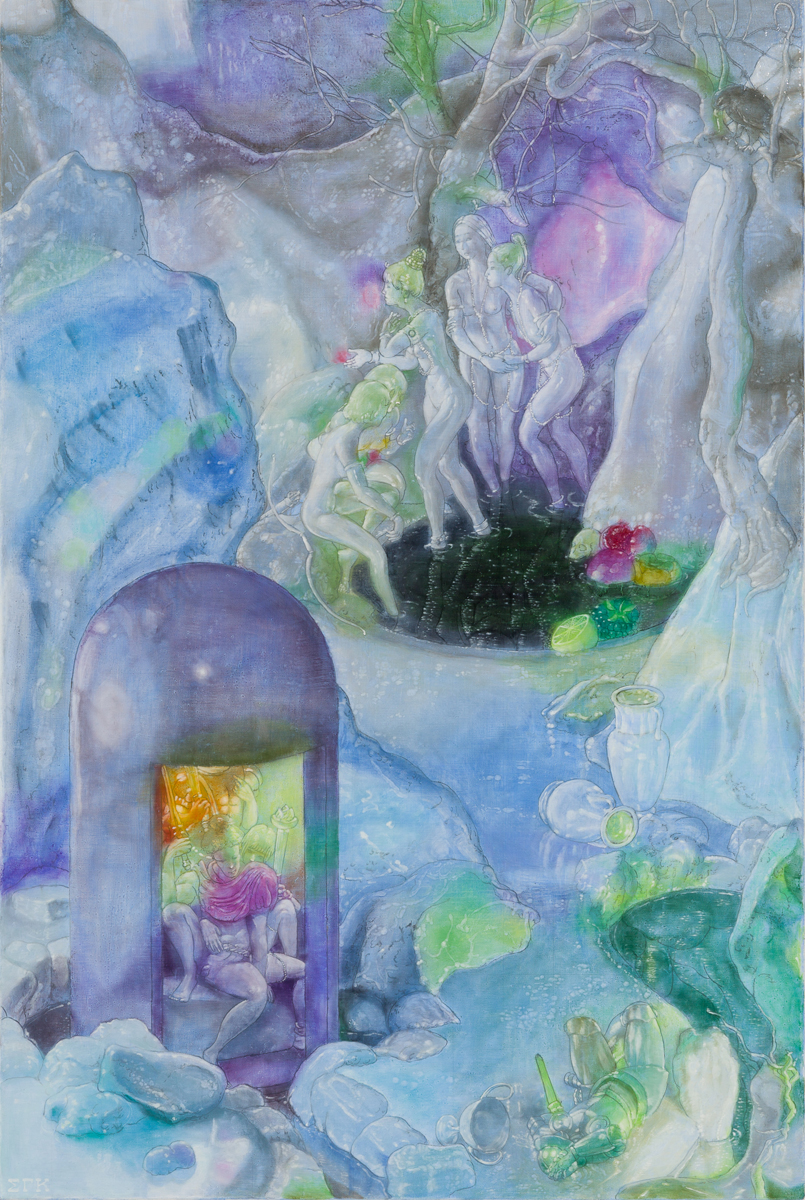
Links
- Samuel Quinteros – Gallerie PomPom Page
- Samuel Quinteros – Personal Instagram
- Samuel Quinteros – Art Instagram
- Samuel Quinteros – Facebook
